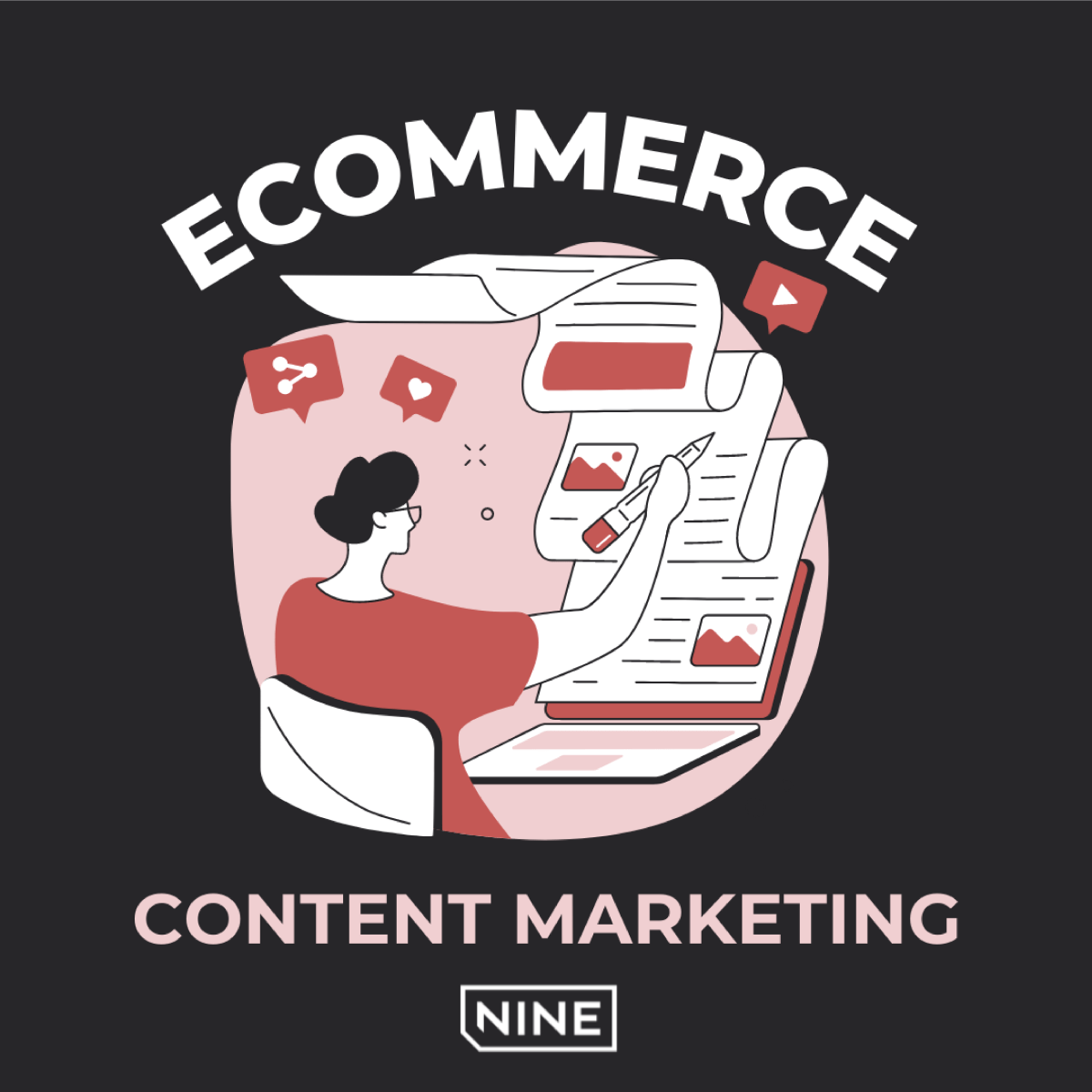
At some level, every ecommerce website is engaged in content marketing. Even the most basic online store has a product page that requires a well-written and engaging experience to help sell the product. Companies with two or more products may even have a category, which is a forgotten page that still has search engine ranking potential.
Unfortunately, organically ranking your category or product page isn’t as easy as creating a single piece of content. With Google furthering its emphasis on topic authority, ranking for a product's primary keywords requires a more comprehensive content marketing strategy.
What is ecommerce content marketing?
Content marketing for ecommerce sites is the development of additional pages that contribute to website traffic and support the product and category pages. The supporting pages cover topics that are both directly and indirectly, related to what a website is selling.
As you will learn, there are various strategies you can apply to your content marketing plan. These methods only work when targeting the potential customer most fit for your product.
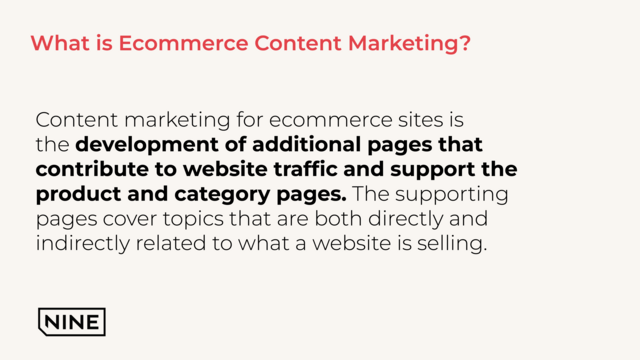
Do you Need Content Marketing For Your Ecommerce Site?
It makes sense how online store owners often ask this question. With the ever-growing presence of social media platforms continuing to capture the attention of ecommerce brands, it might appear content marketing is not important.
But the answer is yes. When done correctly, every ecommerce brand can and will benefit from content marketing. However, there is not a single approach that works for every site. Failed content marketing strategies are both a result of poor execution but also poor strategy.
Why You Need Content Marketing For Your Ecommerce Site
Content marketing helps increase organic search rankings while providing an opportunity to capture a potential customer earlier in the buyer journey. In SEO, we call this top-of-funnel marketing.
Having the correct “why” is the first step in the ecommerce content marketing process. Let’s look at the many reasons every ecommerce site needs to execute an effective content marketing strategy.
FYI: Your “why” lives within these reasons.
Internal Linking to Product Pages
Google understands topical authority in two ways. Most commonly, Google identifies it as the amount of content coverage you have for a subject. For us, it’s like writing a book on ecommerce strategies rather than having a single article on the topic.
If your website has 50 high-quality articles about kid's bicycles, Google will likely see you as more of an expert than a bicycle shop with three articles.
The second way Google understands topical authority is through internal linking. This is how your content communicates with other content on your site based on the link and specified anchor text.
When your website has high-quality content and internal links connecting the content, Google can better understand your authority on the most important keywords for your online store.
Lead Generation
With 32,000 searches each month for kid's bikes, there’s plenty of market potential for this term. But if you try to go head to head in either organic search or paid ads, your ecommerce business will spend a significant amount of money.
This is where content marketing comes in. Content marketing helps to provide lead generation to potential customers that are near but not at the point of purchase.
A kid's bike ecommerce company could write an article to the question “when do kids learn to ride a bike?” This question gets 350 searches per month but is four times easier to rank for than a kids bike.
It makes sense how the person searching this question needs a bike to teach their child to ride, right? Sounds like the perfect lead to me.
Social Media Content
The one thing that stops most ecommerce companies from actively engaging in social media is being unsure what to talk about. One of the unsung benefits to SEO content marketing is leveraging the blog articles for your social media accounts.
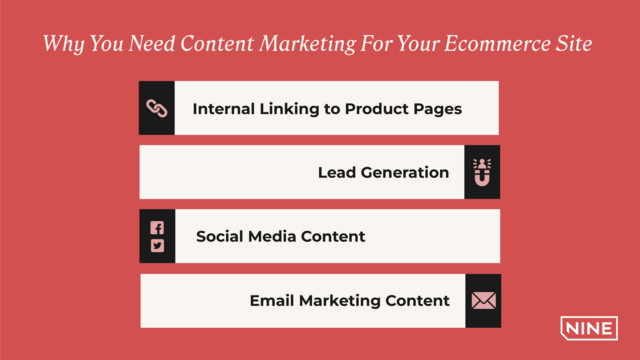
Email marketing Content
In addition to social media, content marketing brings life to email marketing campaigns. Now, you can send emails with more than promotions and special offers. You're now adding value to your email list, which is always appreciated with fewer unsubscribes.
How To Find Great Content
Once you have your “why” in place, the second step in the ecommerce content marketing process is to identify content worthy of publishing. Look to your company, industry, and customers, and you will find plenty of opportunities to publish great content.
The best content marketing strategy uses data and experience to showcase your expertise. An SEO ecommerce agency helps to identify keywords and topics to discuss, but what matters most is often what we find inside your existing ecommerce company.

Review Your Ecommerce Analytics
While many brands and retailers focus on revenues and profits, your ecommerce store is likely equipped with more heavy-duty reporting. Not only can these reports help make product-related decisions, but they serve as statistics for your content marketing.
Spy On Your Social Media Followers
What are your customers talking about? Search your followers' profiles and find content related to your product or industry. Look for common themes that will make for great content, or search for trending hashtags around your expertise.
Search YouTube
Recency is an important ranking factor for YouTube SEO, with many top results published within the last several weeks. Searching for your ecommerce category on YouTube presents a list of videos with the latest information.
A search for “kids bicycle” led to many kids bicycle riding songs. Looks like bike riding is the next “going potty.” Perhaps it’s a good idea to create an article about the “top songs for teaching a kid how to ride a bike.”
Guess what? There’s search volume for that!
Attend Trade Shows
Thanks to this content marketing initiative, those dreaded industry trade shows now serve a greater purpose. There will be plenty of content ideas discovered during the event. Some will happen through conversation, whereas others appear at the booths.
Use a Keyword Search For Matching Product Category Terms
You don’t have to wait for an agency to help discover new content based on search terms. Basic keyword tools let you discover terms and questions that include your target keyword. A matching term we found is “balance bike for kids,” which has 2000 searches per month with only a modest difficulty level.
Talk To Your Internal Team
Customer service specialists, pick and packers, and software engineers often know topics related to your business that your marketing team doesn’t. Consider including your team in your ecommerce marketing meetings when thinking through content. The amount of valuable content they bring to the table is often plentiful.
Ecommerce Content Marketing Strategies
Now that we know where to look for content, it’s time to decide what content to create. The third step in the ecommerce content marketing process is developing a strategy.
Your ecommerce content strategy is more than finding topics with the highest search volume. You need several types of content since our goal is topic authority and link building.
Below, you will find a list of content types to consider and real-life ecommerce content marketing examples.
Best of Lists
Look inside your website analytics, and you will find an assortment of “best of” lists. While your category page may list kid's bikes from best to worst sellers, creating an article has a better chance of ranking.
"Best of" lists don’t have to be based on a product category; they can also be based on a demographic.
JetPens is receiving over two thousand visitors with their article about “the best pens and stationery for left-handed writers.”
https://www.jetpens.com/blog/The-Best-Pens-Stationery-for-Left-Handers/pt/891

How To Articles
We all dislike instruction manuals, yet we enjoy “how-to” articles. A great way to start with content marketing is by creating “how to” articles about the products you carry.
You may not have heard of Northern Brewer, but with the help of this how-to article, 15,600 people each month learn about this retailer.
https://www.northernbrewer.com/blogs/new-to-brewing-start-here/how-to-brew-beer-homebrewing-101
“I Didn’t Think of that” Alternative Uses
A linkable asset is an article written to generate backlinks. Alternative use articles go beyond the “how to” articles inside your products S.O.P. and help generate more reasons to buy your product.
Bringing Life To Products
When we think about bringing our products to life, we think about social media marketing. That’s a great place to start, but there’s even more, we can do with content marketing. Here are some questions to ask.
Where are your products used?
What experiences are your products a part of?
Patagonia does a great job of this
Attach To Audience Interests
Interest-specific articles are great for building brand loyalty with existing customers and increasing brand awareness among consumers unfamiliar with your online store.
Recognizing the growing trend of working out from home, Qualo receives over 300 monthly visitors from this article towards parents whose “interest” is their kids.
https://qalo.com/blogs/qalo-life/12-at-home-workouts-to-do-with-your-kids
Create Industry Reports
You don’t need to be a statistician or work for an industry publication to create unique reports. You need a social media following or email list to create a compelling report.
Poll your social media followers about something interesting and report on these findings in your article. A kids bike retailer can poll their audience to find the average number of times kids fall off the bike before getting the hang of it.
FAQ’s
Tired of answering the same questions repeatedly? Turn your customer's most frequently asked questions into a blog post. FAQs may not have much search volume, but they become an internal linking dream!
Golf.com Receives over 700 thank you’s in the form of website visits with their article helping new golfers find their first set of clubs.
https://golf.com/gear/6-things-buying-first-clubs-gear-questions/
Product Reviews
No, not your own products...that would be silly. Providing reviews for non-competitive products is a unique angle that ecommerce companies can leverage with their marketing strategy.
Field & Stream is reeling in over 1,100 visitors with this “best survival books'' article. With a retargeting campaign in place, we don’t expect to see a lot of catch and release for these website visitors.
https://www.fieldandstream.com/outdoor-gear/best-survival-books/
Recipes
You don’t have to sell meal-related products or be a food blogger to have recipes on your website. Every company can post recipes based on their target demographics and food interests. Thanks to this easy camping recipes article, Eureka Camping receives over 15,000 visitors each month.
https://www.eurekacamping.com/blog/article/25-easy-camping-recipes-using-5-ingredients-or-less
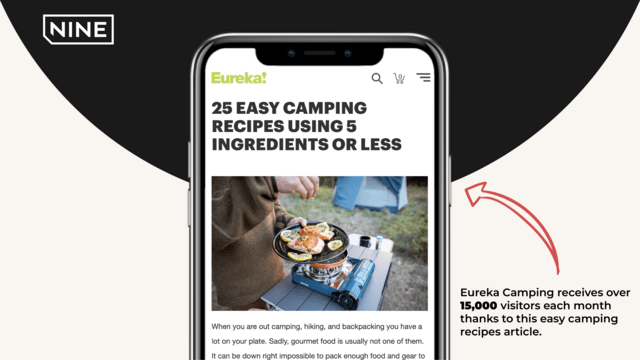
Scams
Help customers identify “what to watch for” in your industry. Not only does this make you look like the good guy, but it drives a lot of traffic.
“CBD Scams” receives 150 clicks per month. A CBD retailer with vast industry experience would most likely create a better guide to avoiding CBD scams and outrank some of the first-page competitors.
Influencers
Want your ecommerce site to benefit from influencers without paying them? Many micro-influencers have little online competition. While you may not rank for “Kim Kardashian fashion tips,” you can compile information from industry influencers and rank for a long tail term.
Throwbacks
What do you think is harder to rank for, a new trendy topic or one popular several years back? Even with hundreds of articles, an older conversation may be easier to rank for. Why? Because Google does not prioritize outdated content.
Boat shoes may not be “in style” as they once were, but DiveIn Boating is still receiving 3000 monthly visits because of this article.
https://www.divein.com/boating/boat-shoes/
What To Include In Your Content
The fourth and final step (well, for this article) in the ecommerce content marketing process is creating the best page experience possible. Just as important as the content marketing strategy is the content creation strategy.
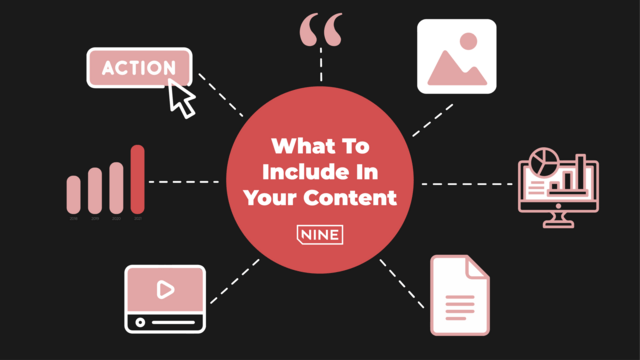
A Summary
A sad truth, people scan vs. read an article. Your introduction helps the reader (or scanner) understand what to expect from your content. Based on what they find in the summary, this allows them to scan or read your article from beginning to end.
Engaging content
This goes without saying, but your content cannot be boring. While there are low-cost writers or even robots that will write your article, it isn’t the information that keeps you at the top of the search engine.
Page time is an important ranking factor, and we consider it part of any search engine optimization effort. Having a professional writer with the ability to articulate information compellingly keeps readers interested in your article.
Charts and Stats
While these might have been boring during a high school class, they are helpful in blog posts. Charts and stats provide a visual or at least non-textual way of delivering information.
Infographics
Piggybacking off of charts and stats, and going the extra mile to create infographics, makes your article more enjoyable and linkable. If other bloggers like your infographic, they may repost it on their blog post, listing you as the source.
Short Videos
While we technically call pages a blog post, they’re really more of a conversation. Sometimes, conversations are better understood through video content. Including interactive content such as short videos helps to break up the page, making challenging information easier to understand.
Custom Imagery
BREAKING NEWS; stock photos don’t help your article. In fact, many times, they make the articles frustrating because they appear forced. A better strategy is creating custom images for your articles with text to explain its purpose.
Quotes
“Quotes are one of the most underrated linkable assets available to content marketers.”
Feel free to quote that in your article :)
Besides being a linkable asset, quotes are potentially the most memorable part of an article. Insert quotes into articles. Set the font size bigger and then differentiate the text with colors to stand out.
Additional Resources
Whenever you mention something you’ve previously written about, creating that internal link within the article is a good idea. However, sometimes there are unmentioned additional resources that are helpful to the visitor. In this situation, provide an additional resources section at the bottom of the article.
Call to Action(s)
Every article needs a call to action. Sometimes that means pushing a product, whereas it makes sense to capture a name and email at other times. Ensure your article includes at least one call to action but in a noninvasive or overly distracting way.
5 Best Practices For Ecommerce Content Marketing
We’ve covered a lot in this article, but let’s finish strong and cover the simple best practices you need to remember when beginning an ecommerce content marketing initiative.
Make sure your entire team understands the importance of content marketing.
Create a content marketing schedule and keep it!
To maximize the value of content marketing, leverage blog posts on other channels.
Perform link building outreach for every article that you publish.
Regularly update your articles to keep them recent in the eyes of Google.
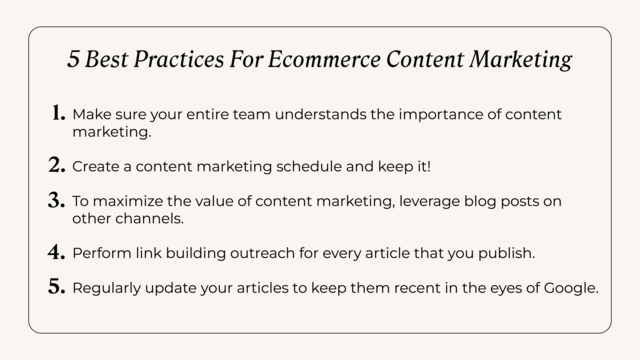
The Nine: Ecommerce Content Marketing Agency
Are you an ecommerce company looking to begin or optimize a current ecommerce SEO content marketing strategy? We can help. The nine is an Ecommerce agency committed to helping our clients increase revenues through digital marketing.

